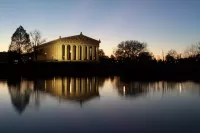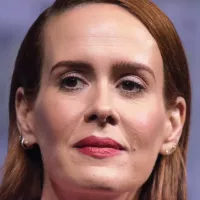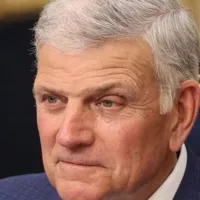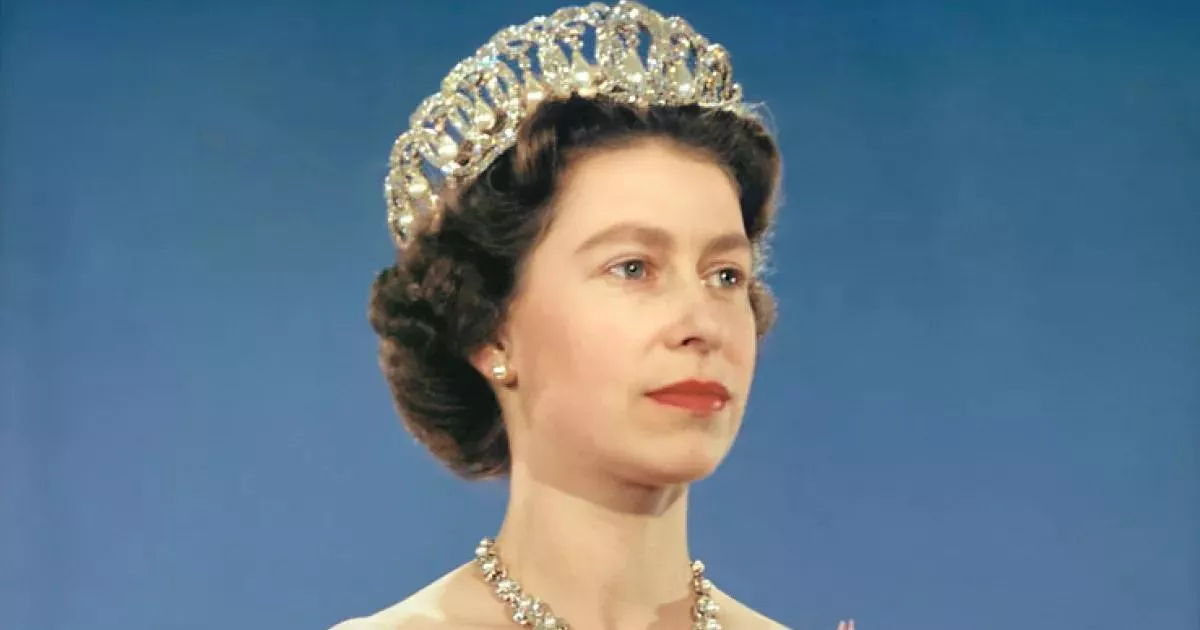Elizabeth II reigned as Queen of the United Kingdom and other Commonwealth realms from 1952 until her death in 2022. She ruled 32 sovereign states during her lifetime, and 15 at the time of her death. Her reign, lasting 70 years and 214 days, is the longest of any British monarch and the second-longest of any sovereign. She also holds the record as the longest-reigning queen regnant in history.
1922: Role of the 1922 Committee in Selecting a Leader
After Eden's resignation, Lord Salisbury and Lord Kilmuir consulted the British Cabinet, Churchill, and the chairman of the backbench 1922 Committee. This consultation process resulted in Elizabeth appointing their recommended candidate, Harold Macmillan, as prime minister.
April 1926: Elizabeth II's Birth
In April 1926, Elizabeth Alexandra Mary, later known as Elizabeth II, was born. She would become Queen of the United Kingdom and other Commonwealth realms.
April 1926: Birth of Elizabeth
In April 1926, Elizabeth was born in London, the first child of the Duke and Duchess of York (later King George VI and Queen Elizabeth The Queen Mother).
1926: First Official Portrait Photograph
In 1926, Marcus Adams took the first official portrait photograph of Elizabeth.
1927: Royal Tour of Australia and New Zealand
In 1927, Elizabeth remained in Britain when her parents toured Australia and New Zealand as she was considered too young for public tours.
1929: Visits to Grandfather
In 1929, Elizabeth's regular visits to her seriously ill grandfather, George V, were credited with raising his spirits and aiding his recovery.
1930: Birth of Princess Margaret
In 1930, Princess Margaret, the only sibling of Elizabeth, was born. The two princesses were educated at home.
1933: First Royal Corgi
Elizabeth's lifelong love of corgis began in 1933 with Dookie, the first of many royal corgis.
1934: First Meeting with Prince Philip
In 1934, Elizabeth first met her future husband, Prince Philip of Greece and Denmark.
1936: Abdication of Edward VIII
In 1936, Edward VIII abdicated, leading to Elizabeth's father becoming King George VI and making Elizabeth the heir presumptive to the throne.
1936: Father Accedes to the Throne
In 1936, Elizabeth's father acceded to the throne upon the abdication of his brother Edward VIII, making the ten-year-old Princess Elizabeth the heir presumptive.
1937: Second Meeting with Prince Philip
In 1937, Elizabeth met Prince Philip of Greece and Denmark for the second time.
July 1939: Meeting Prince Philip at Dartmouth
In July 1939, Elizabeth met Prince Philip at the Royal Naval College in Dartmouth, where she fell in love with him and began exchanging letters.
1939: Royal Tour of Canada and the United States
In 1939, Elizabeth's parents toured Canada and the United States, but Elizabeth remained in Britain as she was considered too young to undertake public tours.
May 1940: Residence at Royal Lodge, Windsor
From February to May 1940, Princesses Elizabeth and Margaret lived at Royal Lodge, Windsor, before moving to Windsor Castle.
1943: First Solo Public Appearance
In 1943, Elizabeth undertook her first solo public appearance on a visit to the Grenadier Guards, of which she had been appointed colonel.
April 1944: Elizabeth's Arms
From April 1944 until her accession, Elizabeth's arms consisted of a lozenge bearing the royal coat of arms of the United Kingdom, differentiated with a label of three points argent, the centre point bearing a Tudor rose, and the first and third a cross of Saint George.
July 1944: Counsellor of State
In July 1944, Parliament changed the law so that Elizabeth could act as one of five counsellors of state in the event of her father's incapacity or absence abroad.
February 1945: Appointment in the Auxiliary Territorial Service
In February 1945, Elizabeth was appointed an honorary second subaltern in the Auxiliary Territorial Service, training as a driver and mechanic.
1946: Induction into the Gorsedd of Bards
In 1946, Elizabeth was inducted into the Gorsedd of Bards at the National Eisteddfod of Wales.
July 1947: Official Engagement Announcement
On 9 July 1947, the engagement of Elizabeth to Prince Philip was officially announced.
November 1947: Marriage to Philip Mountbatten
In November 1947, Elizabeth married Philip Mountbatten, a former prince of Greece and Denmark. The marriage lasted 73 years.
November 1947: Marriage at Westminster Abbey
On 20 November 1947, Elizabeth married Philip Mountbatten at Westminster Abbey, receiving 2,500 wedding gifts from around the world.
1947: Overseas Tour in Southern Africa
In 1947, Elizabeth went on her first overseas tour, accompanying her parents through southern Africa.
1947: Commitment to Public Service
In her Platinum Jubilee accession day message in February 2022, she renewed her commitment to a lifetime of public service, which she had originally made in 1947.
November 1948: Birth of Prince Charles
In November 1948, Elizabeth gave birth to her first child, Prince Charles.
July 1949: Residence at Clarence House
In July 1949, Elizabeth and Philip took up residence at Clarence House in London, after leasing Windlesham Moor.
August 1950: Birth of Princess Anne
In August 1950, Elizabeth gave birth to her second child, Princess Anne.
October 1951: Visit to Canada and Washington, DC
In October 1951, Elizabeth visited Canada and Washington, DC, where her private secretary carried a draft accession declaration in anticipation of King George VI's death. This reflects the King's declining health and the preparation for Elizabeth's potential accession to the throne.
1951: Residence in Malta
Between 1949 and 1951, Elizabeth lived intermittently in Malta with Philip, who was stationed there as a Royal Navy officer. They resided at Villa Guardamangia.
February 1952: Ascension to the Throne
In February 1952, Elizabeth II ascended to the throne, becoming Queen of the United Kingdom and other Commonwealth realms.
April 1952: Declaration on the Royal House Name
On April 9, 1952, Elizabeth declared that the royal house would continue to be Windsor, despite suggestions to adopt Mountbatten or Edinburgh. This decision preserved the established name of the royal house.
1952: Elizabeth's Accession and Role in the Commonwealth
By 1952, with Elizabeth's accession, her role as head of multiple independent states within the Commonwealth of Nations was already established, marking the ongoing transformation of the British Empire.
1952: Death of George VI and Elizabeth's Accession
In early 1952, while Elizabeth and Philip were in Kenya, news arrived of the death of Elizabeth's father, George VI, on February 6th. Philip delivered the news, and Elizabeth chose to retain Elizabeth as her regnal name, becoming Elizabeth II. She was proclaimed queen and returned to the United Kingdom.
March 1953: Death of Queen Mary
Queen Mary, Elizabeth's grandmother, died on March 24, 1953. Despite the death, the coronation of Elizabeth II proceeded as planned on June 2, as Mary had requested.
1953: Coronation of Elizabeth II
In 1953, Elizabeth II's coronation took place, marking her formal investiture as Queen.
1953: Seven-Month World Tour
In 1953, Elizabeth and Philip embarked on a seven-month round-the-world tour, visiting 13 countries and covering over 40,000 miles. Elizabeth became the first reigning monarch of Australia and New Zealand to visit those nations. Crowds were immense; three-quarters of the population of Australia were estimated to have seen her.
November 1956: Suez Crisis
In November 1956, Britain and France invaded Egypt in an ultimately unsuccessful attempt to capture the Suez Canal. This event, known as the Suez Crisis, occurred during Elizabeth's reign and had significant political implications.
1957: First Major Personal Criticism of Elizabeth
In 1957, Elizabeth faced her first major personal criticism when Lord Altrincham accused her of being "out of touch" in a magazine. This criticism sparked public outrage and debate.
1957: State Visit to the United States
In 1957, Elizabeth made a state visit to the United States, where she addressed the United Nations General Assembly on behalf of the Commonwealth. During the same tour, she opened the 23rd Canadian Parliament.
1957: Criticism from Lord Altrincham
In 1957, Lord Altrincham criticised Elizabeth's speeches, saying they sounded like those of a "priggish schoolgirl".
February 1960: Birth of Prince Andrew
In February 1960, Elizabeth gave birth to her third child, Prince Andrew. This was the first birth to a reigning British monarch since 1857.
1960: Princess Margaret's Marriage to Antony Armstrong-Jones
In 1960, Princess Margaret married Antony Armstrong-Jones, who was later created Earl of Snowdon. This marriage followed Margaret's decision to abandon plans to marry Peter Townsend due to political and religious objections.
1960: Adoption of the Mountbatten-Windsor Surname
In 1960, the surname Mountbatten-Windsor was adopted for Philip and Elizabeth's male-line descendants who do not carry royal titles. This decision incorporated Philip's family name into the lineage of the royal family.
1963: Macmillan's Resignation and Appointment of Alec Douglas-Home
In 1963, Macmillan resigned, advising Elizabeth to appoint Alec Douglas-Home as the prime minister, which she did. This appointment led to further criticism regarding the selection process.
March 1964: Birth of Prince Edward
In March 1964, Elizabeth gave birth to her fourth child, Prince Edward.
1964: Visit to Quebec Amid Separatist Tensions
Before her tour through parts of Quebec in 1964, the press reported that extremists within the Quebec separatist movement were plotting Elizabeth's assassination. A riot broke out in Montreal, but her calmness and courage were noted.
1965: Conservatives Adopt Formal Leadership Election Mechanism
In 1965, the Conservatives adopted a formal mechanism for electing a leader, thus relieving the Queen of her involvement in the appointment of the prime minister.
1965: Rhodesia's Unilateral Declaration of Independence
In 1965, the Rhodesian prime minister, Ian Smith, unilaterally declared independence while expressing "loyalty and devotion" to Elizabeth. Elizabeth formally dismissed him, but his regime survived for over a decade despite international sanctions.
1966: Aberfan Mining Disaster
In 1966, Elizabeth was criticized for waiting eight days before visiting the village of Aberfan, where a mining disaster killed 116 children and 28 adults. The delay was later regretted.
1970: First Royal Walkabout
Elizabeth's first royal walkabout, meeting ordinary members of the public, took place during a tour of Australia and New Zealand in 1970.
October 1972: State Visit to Yugoslavia
In October 1972, Elizabeth toured Yugoslavia, becoming the first British monarch to visit a communist country. She was received by President Josip Broz Tito and greeted by a large crowd in Belgrade.
1973: Britain's Entry to the European Community
In 1973, the British government sought entry to the European Community, a goal it achieved as Britain's ties to its former empire weakened.
February 1974: 1974 British general election
In February 1974, British Prime Minister Edward Heath advised Elizabeth to call a general election in the middle of her tour of the Austronesian Pacific Rim, requiring her to fly back to Britain. The election resulted in a hung parliament, and Harold Wilson formed a government after Heath's coalition discussions failed.
1975: 1975 Australian Constitutional Crisis
In 1975, during the Australian constitutional crisis, Australian Prime Minister Gough Whitlam was dismissed by Governor-General Sir John Kerr. Elizabeth declined to reverse Kerr's decision, fueling Australian republicanism.
1977: Silver Jubilee Celebrations
In 1977, Elizabeth marked the Silver Jubilee of her accession with parties and events throughout the Commonwealth, reaffirming her popularity.
1977: Trudeau pirouetting behind Elizabeth
In 1977, Prime Minister Pierre Trudeau pirouetted behind Elizabeth's back at Buckingham Palace. This was seen as a sign of disrespect.
1978: State Visit by Nicolae Ceaușescu
In 1978, Elizabeth endured a state visit to the United Kingdom by Romania's communist leader, Nicolae Ceaușescu, and his wife, Elena, though privately she disapproved of them.
1978: Divorce of Princess Margaret and Lord Snowdon
In 1978, Princess Margaret divorced Antony Armstrong-Jones, Earl of Snowdon. Margaret did not remarry after the divorce.
1980: Elizabeth's Involvement in Canadian Constitutional Discussions
In 1980, Canadian politicians found Elizabeth "better informed" on the patriation of the Canadian constitution than British politicians, particularly after the failure of Bill C-60, which would have affected her role as head of state.
1981: Attack During Trooping the Colour
During the 1981 Trooping the Colour ceremony, six shots were fired at Elizabeth from close range as she rode down The Mall, London, on her horse, Burmese. The assailant, Marcus Sarjeant, was later imprisoned. Elizabeth's composure was widely praised.
September 1982: Prince Andrew's Service in the Falklands War
In September 1982, Elizabeth's son Andrew served with British forces in the Falklands War, eliciting both anxiety and pride from the Queen.
1983: Invasion of Grenada
In 1983, Elizabeth was angered when the Reagan administration ordered the invasion of Grenada, one of her Caribbean realms, without informing her.
1983: Mental Health Act 1983
Jaswant Singh Chail, who attempted to assassinate the Queen, was placed under a hybrid order under section 45A of the Mental Health Act 1983, ordering that he remain at Broadmoor Hospital to be transferred into custody only after receiving psychiatric treatment.
1984: Miners' Strike Comment
During a royal tour of The Times' offices in 1984, when asked about the miners' strike of 1984–85, Elizabeth replied that it was "all about one man" (a reference to Arthur Scargill).
1985: Reminiscence of VE Day
In 1985, Elizabeth recalled mingling incognito with celebrating crowds in London on Victory in Europe Day, expressing her fear of being recognized.
July 1986: Worries over Thatcher's policies
In July 1986, The Sunday Times reported that Elizabeth II was worried about Margaret Thatcher's economic policies, which she believed fostered social divisions. She was also alarmed by high unemployment, riots, the miners' strike violence, and Thatcher's refusal to sanction South Africa's apartheid regime.
September 1986: Royal Family Media Coverage
In September 1986, Donald Trelford wrote in The Observer that the media coverage of the royal family had become so intense that the boundary between fact and fiction was blurred, with some papers not caring about the truth of their stories.
1986: State Visit to China
In 1986, Elizabeth II made a six-day state visit to the People's Republic of China, becoming the first British monarch to visit the country. The tour included visits to the Forbidden City, the Great Wall of China, and the Terracotta Warriors.
1987: Criticism and Political Events
In 1987, Elizabeth II became a target of satire after younger royals participated in 'It's a Royal Knockout.' She publicly supported divisive constitutional amendments in Canada, drawing criticism. Additionally, the elected Fijian government was deposed in a military coup, and Elizabeth supported the Governor-General's attempts to negotiate a settlement.
May 1991: Address to US Congress
In May 1991, following the Gulf War victory, Elizabeth II became the first British monarch to address a joint meeting of the United States Congress.
November 1992: Annus Horribilis Speech
In November 1992, Elizabeth II described 1992 as her 'annus horribilis' during a speech marking her Ruby Jubilee. This was due to increased republican sentiment, press scrutiny of her wealth, marital issues within her family, a fire at Windsor Castle, and general criticism of the monarchy. In the same month, demonstrators threw eggs at The Queen during a state visit to Dresden.
1992: Annus Horribilis
In 1992, the Queen experienced what she termed her 'annus horribilis,' marked by several family crises and public scrutiny.
1993: Royal Finances Reform
In 1993, plans were made to reform the royal finances, including Elizabeth II paying income tax from 1993 onwards, and a reduction in the civil list.
January 1994: Wrist Injury
In January 1994, Elizabeth II broke her left wrist when the horse she was riding at Sandringham tripped and fell.
October 1994: Visit to Russia
In October 1994, Elizabeth II became the first reigning British monarch to set foot on Russian soil.
1994: State Visit to Russia
In 1994, Queen Elizabeth II made a state visit to Russia, further expanding her role in international diplomacy.
October 1995: Hoax Call Incident
In October 1995, Elizabeth II was tricked by a radio host impersonating the Canadian prime minister, during which she expressed support for Canadian unity regarding Quebec's referendum.
December 1995: Divorce Suggestion
At the end of December 1995, Elizabeth II, after consulting with her husband, John Major, the Archbishop of Canterbury, and her private secretary, wrote to Charles and Diana suggesting that a divorce would be advisable.
August 1997: Diana's Death and Public Reaction
In August 1997, following Diana's death in a car crash in Paris, Elizabeth II shielded her grandsons at Balmoral. The royal family's silence and the lack of a flag at half-mast over Buckingham Palace led to public dismay.
1997: Death of Diana, Princess of Wales
In 1997, Diana, Princess of Wales, former daughter-in-law of Queen Elizabeth II, died, leading to widespread public mourning and media attention.
November 1999: Australian Monarchy Referendum
In November 1999, a referendum in Australia on the future of the Australian monarchy favored its retention.
1999: Opening of Welsh and Scottish Legislatures
In 1999, Elizabeth II formally opened the newly established legislatures for Wales and Scotland as part of the devolution process in the United Kingdom. The National Assembly for Wales opened in Cardiff in May, and the Scottish Parliament opened in Edinburgh in July.
2000: Christmas Message 2000
In her Christmas Message to the Commonwealth in 2000, Elizabeth included a personal note about her faith.
2002: Golden Jubilee
In 2002, Elizabeth II marked her Golden Jubilee, the 50th anniversary of her accession. Despite the deaths of her sister and mother earlier in the year, the Jubilee was a success, marked by extensive tours, street parties, and commemorative events.
2002: Statement on Abdication
In a meeting in 2002, Elizabeth told Canadian governor-general Adrienne Clarkson that she would never abdicate, stating, "It is not our tradition. Although, I suppose if I became completely gaga, one would have to do something."
2003: Lawsuit against Daily Mirror
In 2003, Elizabeth II sued the Daily Mirror for breach of confidence after a reporter posed as a footman at Buckingham Palace and obtained an injunction preventing the newspaper from publishing gathered information.
October 2006: Missed Emirates Stadium Opening
In October 2006, Elizabeth II missed the opening of the new Emirates Stadium due to a strained back muscle.
2006: Strong Support for Monarchy
Polls in Britain in 2006 revealed strong support for the monarchy.
May 2007: Report on Frustration with Blair's Policies
In May 2007, The Daily Telegraph reported that Elizabeth II was "exasperated and frustrated" by Tony Blair's policies, particularly concerning the British Armed Forces' involvement in Iraq and Afghanistan.
November 2007: Diamond Wedding Anniversary
In November 2007, Elizabeth II became the first British monarch to celebrate a diamond wedding anniversary.
December 2007: Longest-Lived British Monarch
In December 2007, Elizabeth surpassed her great-great-grandmother, Queen Victoria, to become the longest-lived British monarch.
2007: Strong Support for Monarchy
Polls in Britain in 2007 revealed strong support for the monarchy.
March 2008: Maundy Service in Armagh
On March 20, 2008, Elizabeth II attended the first Maundy service held outside England and Wales at St Patrick's Cathedral in Armagh, Ireland.
2008: Tuvalu Referendum
In 2008, a referendum in Tuvalu saw voters reject proposals to become republics.
2009: Saint Vincent and the Grenadines Referendum
In 2009, a referendum in Saint Vincent and the Grenadines saw voters reject proposals to become republics.
2010: Address to UN General Assembly
In 2010, Elizabeth II addressed the UN General Assembly for a second time as Queen of all Commonwealth realms and Head of the Commonwealth. She officially opened a memorial garden for British victims of the 9/11 attacks during her visit to New York.
2010: Gillard on Australian Monarchy
In 2010, Prime Minister Julia Gillard noted that there was a "deep affection" for Elizabeth in Australia and that another referendum on the monarchy should wait until after her reign.
May 2011: State Visit to Republic of Ireland
In May 2011, Elizabeth II made the first state visit to the Republic of Ireland by a British monarch, by invitation of the Irish president, Mary McAleese.
October 2011: Visit to Australia
In October 2011, Elizabeth II made her 16th visit to Australia since 1954.
2011: State Visit to the Republic of Ireland
In 2011, Queen Elizabeth II made a historic state visit to the Republic of Ireland, symbolizing reconciliation and improved relations.
2012: Opened London Olympics
In 2012, Elizabeth II opened the Summer Olympics and Paralympics in London, making her the first head of state to open two Olympic Games in two countries. She also portrayed herself in a short film alongside Daniel Craig as James Bond for the opening ceremony.
2012: Diamond Jubilee
In 2012, Elizabeth II's Diamond Jubilee marked 60 years since her accession, with celebrations held throughout her realms and the Commonwealth. Jubilee beacons were lit around the world on June 4. On December 18, the Queen became the first British sovereign to attend a peacetime Cabinet meeting since George III in 1781.
2012: Diamond Jubilee Approval Ratings
In 2012, Elizabeth's Diamond Jubilee year, her approval ratings hit 90 per cent.
March 2013: Gastroenteritis and Commonwealth Charter
In March 2013, Elizabeth II stayed overnight at King Edward VII's Hospital as a precaution after developing symptoms of gastroenteritis. A week later, she signed the new Charter of the Commonwealth.
April 2013: Honorary BAFTA Award
On April 4, 2013, Elizabeth II received an honorary BAFTA award for her patronage of the film industry and was called "the most memorable Bond girl yet" at a special presentation at Windsor Castle.
2014: Scottish Independence Referendum Comment
After the 2014 Scottish independence referendum, Prime Minister David Cameron was overheard saying that Elizabeth was pleased with the outcome. She had arguably issued a public coded statement about the referendum by telling one woman outside Balmoral Kirk that she hoped people would think "very carefully" about the outcome.
January 2015: Oldest Living Monarch
In January 2015, Elizabeth became the oldest living monarch after the death of King Abdullah of Saudi Arabia.
September 2015: Longest-Reigning British Monarch
In September 2015, Elizabeth became the longest-reigning British monarch and longest-reigning queen regnant and female head of state in the world.
October 2016: Longest-Reigning Current Monarch
In October 2016, Elizabeth became the longest-reigning current monarch and the longest-serving current head of state following the death of King Bhumibol Adulyadej of Thailand.
February 2017: Sapphire Jubilee
On 6 February 2017, Elizabeth became the first British monarch to commemorate a sapphire jubilee.
August 2017: Philip's Retirement
In August 2017, Philip retired from his official duties as the Queen's consort.
November 2017: Oldest Current Head of State
In November 2017, Elizabeth became the oldest current head of state on the resignation of Robert Mugabe of Zimbabwe.
April 2018: Succession as Head of the Commonwealth
On April 20, 2018, Commonwealth heads of government announced that Charles would succeed Elizabeth II as Head of the Commonwealth, which she stated as her 'sincere wish'.
May 2018: Cataract Surgery
In May 2018, Elizabeth II underwent cataract surgery.
March 2019: Gave up Driving
In March 2019, Elizabeth II gave up driving on public roads, largely due to a car accident involving her husband two months prior.
March 2020: Move to Windsor Castle
In March 2020, as the COVID-19 pandemic hit the United Kingdom, Elizabeth moved to Windsor Castle and sequestered there as a precaution. Public engagements were cancelled and Windsor Castle followed a strict sanitary protocol nicknamed "HMS Bubble".
April 2021: Death of Prince Philip
On 9 April 2021, Prince Philip died after 73 years of marriage, making Elizabeth the first British monarch to reign as a widow or widower since Queen Victoria. Due to COVID-19 restrictions, Elizabeth sat alone at Philip's funeral service.
October 2021: Hospital Stay
In October 2021, Elizabeth cancelled a planned trip to Northern Ireland and stayed overnight at King Edward VII's Hospital for "preliminary investigations".
2021: Most Admired Woman
As of 2021 she remained the third most admired woman in the world according to the annual Gallup poll, her 52 appearances on the list meaning she had been in the top ten more than any other woman in the poll's history.
2021: COVID-19 Vaccinations
In 2021, Elizabeth received her first and second COVID-19 vaccinations in January and April respectively.
2021: Turnbull's Statement on Australians
In 2021, Malcolm Turnbull believed that Australians would not vote to become a republic in her lifetime, stating there were more Elizabethans than monarchists.
2021: Death of Prince Philip
In 2021, Prince Philip, the husband of Queen Elizabeth II, passed away, marking the end of their 73-year marriage.
February 2022: Platinum Jubilee Celebrations Begin
On 6 February 2022, Elizabeth's Platinum Jubilee celebrations began, marking 70 years since her accession. In her accession day message, she renewed her commitment to a lifetime of public service.
June 2022: Meeting with Archbishop of Canterbury
In June 2022, Elizabeth met the Archbishop of Canterbury, Justin Welby, who "came away thinking there is someone who has no fear of death, has hope in the future, knows the rock on which she stands and that gives her strength."
September 2022: Death of Elizabeth II
In September 2022, Elizabeth II died, ending her reign as Queen of the United Kingdom and other Commonwealth realms.
February 2023: Jaswant Singh Chail Pleads Guilty
In February 2023, Jaswant Singh Chail pleaded guilty to attempting to injure or alarm the sovereign, and was sentenced in October to a 9-year custodial sentence plus an additional 5 years on extended licence. The sentencing judge also placed Chail under a hybrid order under section 45A of the Mental Health Act 1983, ordering that he remain at Broadmoor Hospital to be transferred into custody only after receiving psychiatric treatment.
Mentioned in this timeline
Saudi Arabia officially the Kingdom of Saudi Arabia KSA is...
India officially the Republic of India is a South Asian...
New Zealand is an island country located in the southwestern...

Christmas is an annual festival celebrated on December th commemorating...
Hong Kong is a Special Administrative Region of the People's...
Africa is the second-largest and second-most populous continent comprising of...
Trending

2 minutes ago Dick Vitale and Charles Barkley Team Up for College Basketball Broadcasts This Season

2 minutes ago Josh Hart shines with increased workload, making a case to stay in lineup.

2 minutes ago Immanuel Quickley's Growth Evident After Trade: Shines in Return to New York

1 hour ago Kyshawn George's Status Uncertain: Toe Injury Puts Pacers Player's Game in Doubt

1 hour ago Nashville debates $15M surveillance plan, raising concerns about safety versus privacy downtown.

2 hours ago Sarah Paulson Receives Hollywood Walk of Fame Star, Honored by Holland Taylor.
Popular
Aftyn Alyssa Behn is an American politician currently serving as...
Matt and Ross Duffer known as the Duffer Brothers are...

XXXTentacion born Jahseh Dwayne Ricardo Onfroy was a controversial yet...

Stranger Things created by the Duffer Brothers is a popular...

Lane Kiffin is an American football coach currently serving as...

William Franklin Graham III commonly known as Franklin Graham is...

